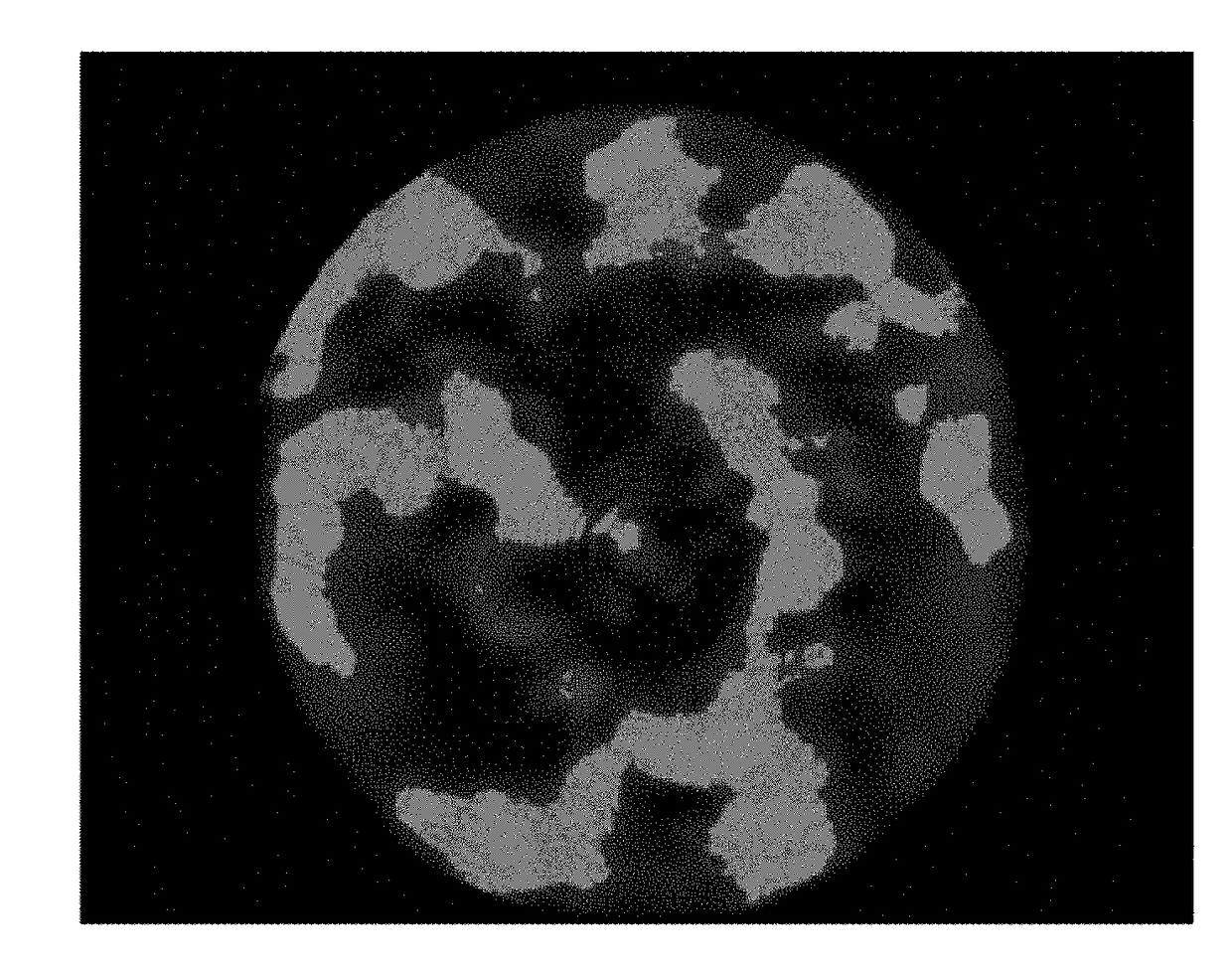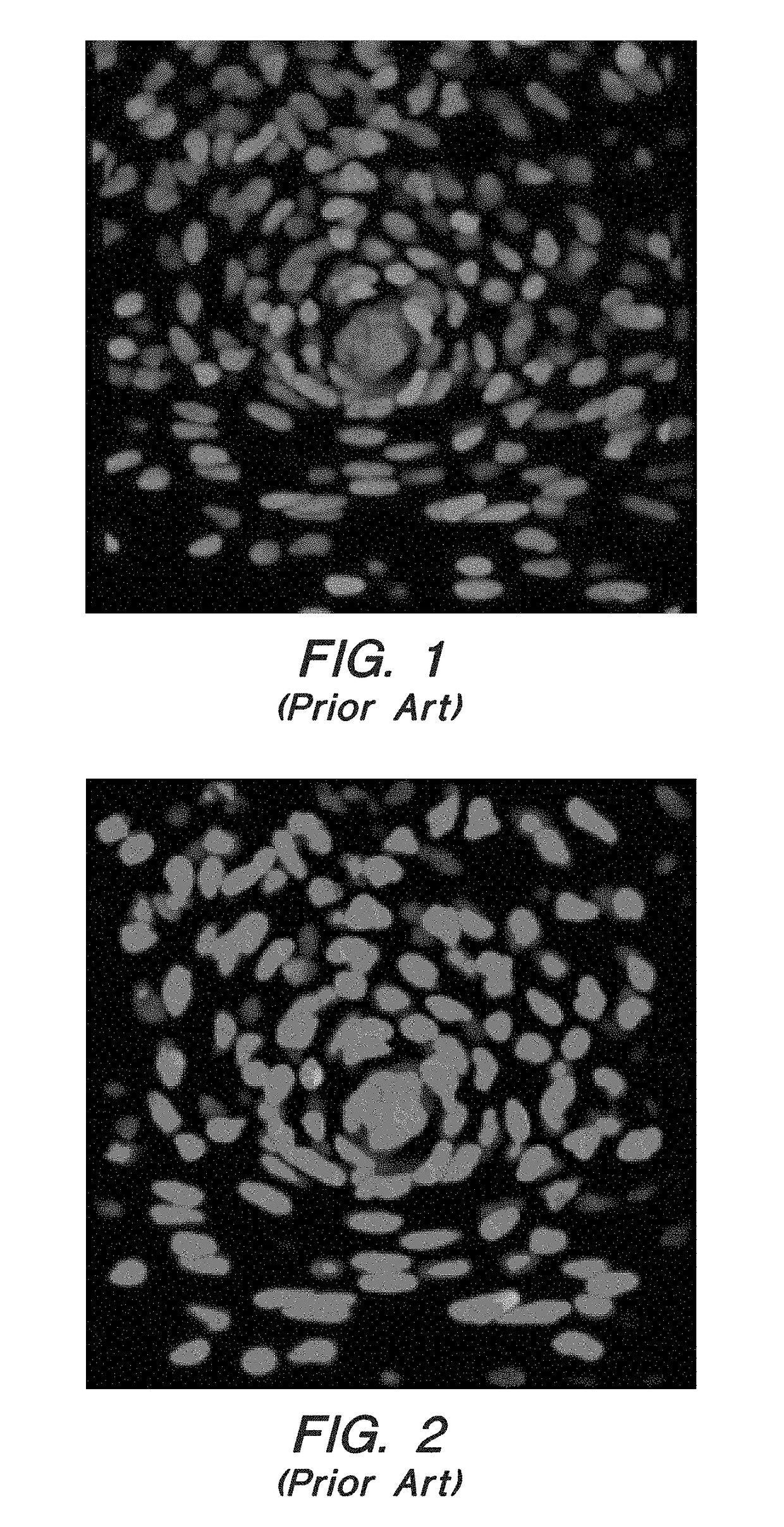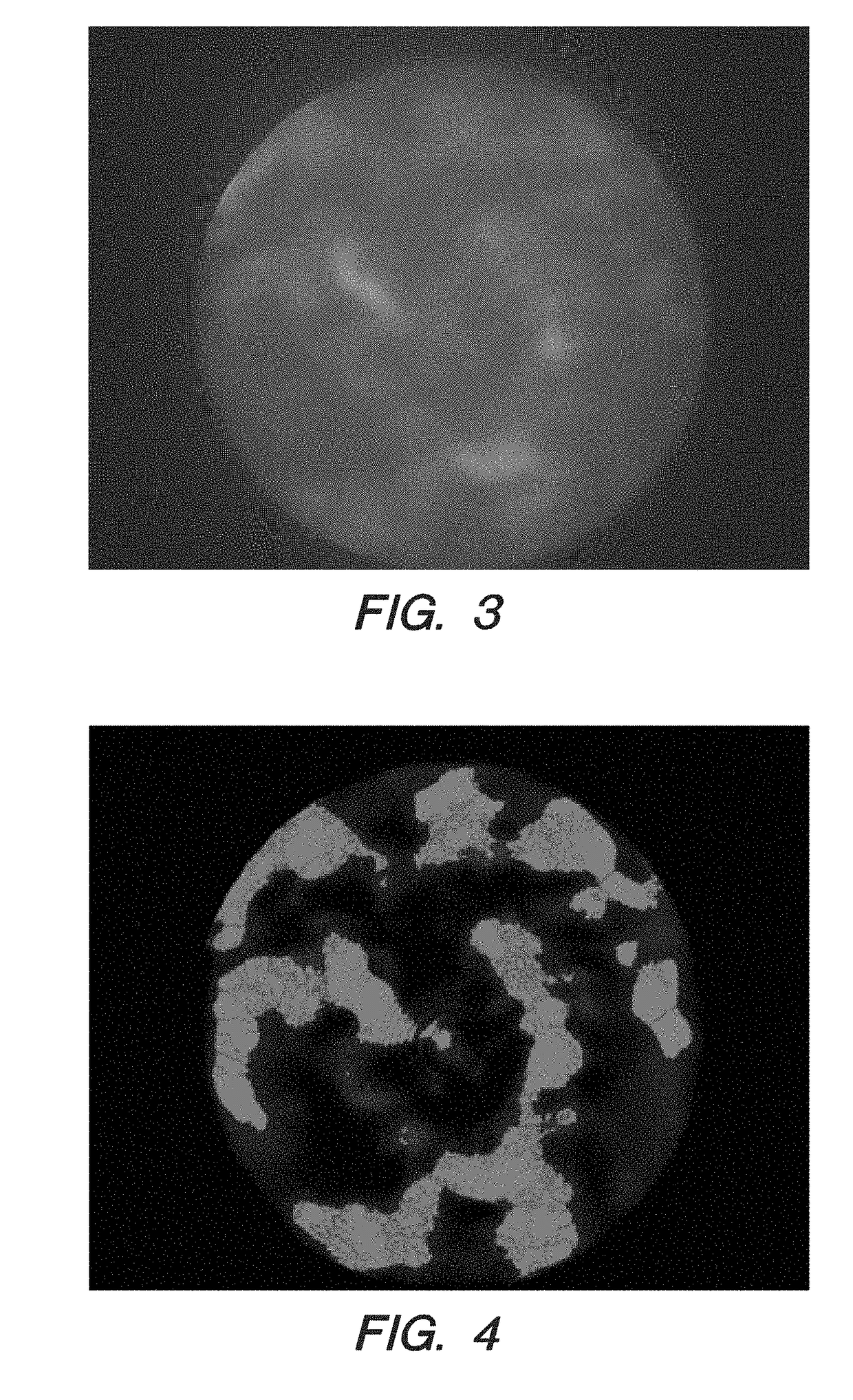Measuring Optical Turbulence Using Cell Counting Algorithms
a technology of optical turbulence and cell counting, applied in image enhancement, instruments, image data processing, etc., can solve the problems of limiting the performance of free-space optical communication, increasing the intensity of the propagation path at the receiving end,
- Summary
- Abstract
- Description
- Claims
- Application Information
AI Technical Summary
Benefits of technology
Problems solved by technology
Method used
Image
Examples
Embodiment Construction
[0022]In brief overview, laser beam speckle at an image plane resulting from atmospheric turbulence can contain information about the propagation channel. The number and size of the speckles can be used to infer the spatial coherence and thus the refractive index, Cn2, along a path. The challenge with this technique is to be able to quickly and effect assess the rapidly evolving speckle pattern and non-uniformity of the speckle cell and count the speckles. To do this, the speckles in an image plane can be analogized to “blobs” on an image in the medical field, such as cells, bacteria, etc. Modern blob counting techniques used in biology, microscopy, and medical imaging can then be applied to turbulent speckle images, to estimate the number and size of the speckle cells, and algorithms which can use the automated counting algorithms can be generated to calculate path Cn2 from speckle information and path geometry.
A. Fried's Coherence Length, r0
[0023]As known in the optical prior art...
PUM
 Login to View More
Login to View More Abstract
Description
Claims
Application Information
 Login to View More
Login to View More - R&D
- Intellectual Property
- Life Sciences
- Materials
- Tech Scout
- Unparalleled Data Quality
- Higher Quality Content
- 60% Fewer Hallucinations
Browse by: Latest US Patents, China's latest patents, Technical Efficacy Thesaurus, Application Domain, Technology Topic, Popular Technical Reports.
© 2025 PatSnap. All rights reserved.Legal|Privacy policy|Modern Slavery Act Transparency Statement|Sitemap|About US| Contact US: help@patsnap.com



